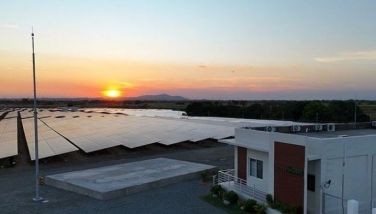Cebu’s water shortage
Or maybe it’s not only Cebu’s. With the current heat wave that we’re experiencing all over the country, there would be a pressure on the water supply everywhere. In varying degrees, of course. Water is such an ordinary daily human need that is usually always available we don’t think about it until it becomes scarce. Oftentimes, too late.
Now with the prolonged dry season and the elevated daily temperature, Cebu’s water supply is seriously affected. And this drew attention to one of its main sources --the Buhisan River, and specifically, the Buhisan Dam. There are calls from the Cebu City Council to have it desilted. Which is a good move, albeit could have been done earlier. Still, desilting it now wouldn’t affect any shortage that may already be happening. Desilting improves dam capacity, not its current supply, which wouldn’t increase if we do the desilting now, since the shortage occurs in the tributaries supplying it.
Actually, whenever there is a water supply shortage, it’s really difficult to address the issue from the supply side; the more effective way would be addressing the demand side. Water supply development takes a very long process and couldn’t address any seasonal shortage that may occur. The problem with water is that its issues evolve quite slowly, creeping over the years until they become acute and cause people to panic. In the case of Metro Cebu’s systems, the water outlook has been studied thoroughly by many previous studies over the last three decades, and predictions have always been consistent. It’s the people’s reaction, especially decision-makers which are late and reactive.
Probably, the latest study which sufficiently describes Cebu’s water supply issue was the Cebu Integrated Area Development Master Plan Study (CIADMPS), prepared by JICA in 1994. Though this was 20 years ago, population and overall area development do not vary much over the years so this document should be sufficient, consistent, and reliable for current decisions to be made. The first reality we need to understand is that present consumption of water is less than the actual demand, meaning it could be more if continuous water supply is available. Many of us wouldn’t know this because we always have water in our faucets. But we need to understand there are some who don’t.
Domestic water supply may come from different sources, identifiably, ground water (which we pump out from beneath the earth), surface water (lakes and rivers), rainwater, which is limited and ultimately joins the ground and seawater, and seawater, which needs to be desalinated before it becomes usable for human use. Each will have its own costs to make water available for daily use. Suffice to say we don’t have any shortage of supply, and the issue would then be the cost of production. In the present state of things, the responsibility falls on the Metropolitan Cebu Water District (MCWD).
But water resources are in the public domain both in the national and local realm, and thus, the concern of the people. It’s surprising and rather unfortunate that many of our local officials seem to have a lackadaisical attitude to this issue.
- Latest




















